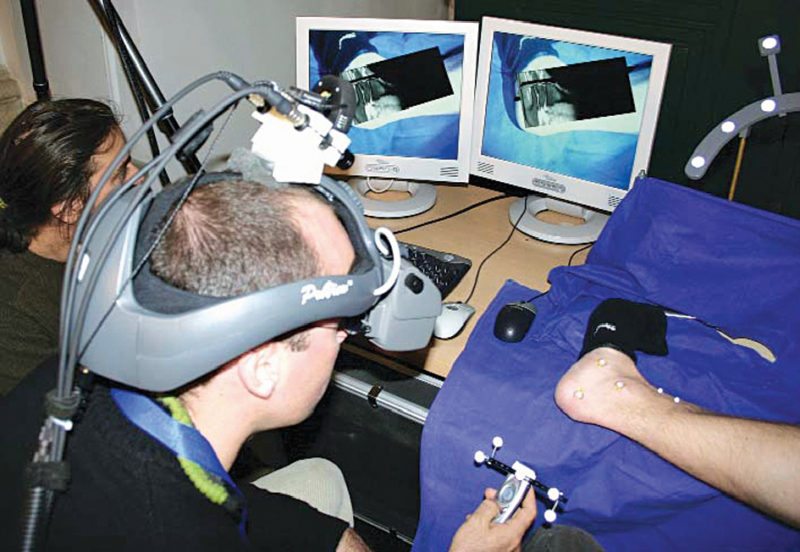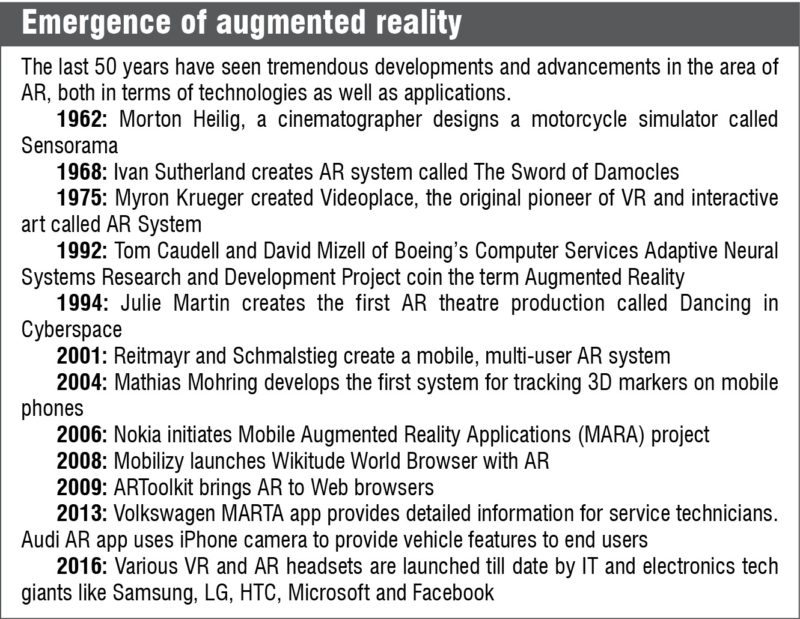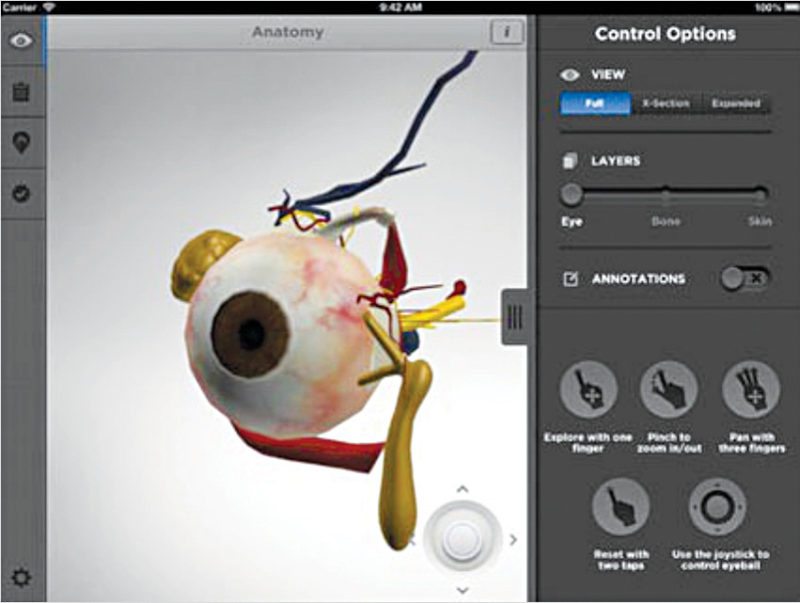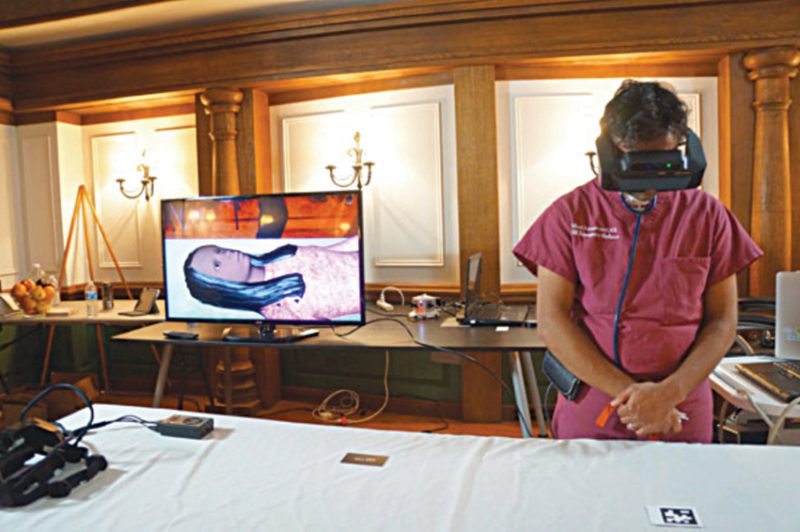Virtual reality (VR) and augmented reality (AR) are regarded as highly-complex combinations in the area of computer science, VR hardware and artistic vision. AR is regarded as a variation of virtual environments or VR. It is regarded as live direct or indirect view of the physical, real-world environment whose elements are augmented by computer-generated sensory inputs such as sound, video, graphics or GPS data.
By contrast, VR replaces the real world with a simulated one. With the aid of AR like addition of computer vision and object recognition, information about the surrounding world becomes more interactive and can be manipulated digitally.
Some researchers define AR as a technology that requires the use of head- mounted displays (HMDs). Any system can be regarded an AR system, provided it has the following three features:
1. It combines real and virtual environments.
2. The system is highly interactive while operating in real time.
3. It is used in a 3D environment.
The main aim of AR is to simplify your life by combining virtual information to immediate surroundings with an indirect view of the real-view environment such as live video streaming. It plays a crucial role in enhancing your perceptions and interactions with the real world.
Gene Becker of Lightning Laboratories defines AR as a technology, an area of research, a vision of future computing, an emerging commercial industry and a new medium for creative expression.
AR in medical applications
AR has continued to develop every day in the last 50 years and has brought today’s technology to modern landscape technology. It can be seen in various applications in military, industrial, commercial, entertainment and many more. But AR in medical technology is growing by leaps and bounds, and has revolutionised medical and healthcare industry by significant improvements and innovations. This is not only making patients’ life safer but also making doctors more efficient in early detection of various diseases. It is making medical treatment more efficient and accurate.

Let us discuss the various AR technologies revolutionising the medical and healthcare industry.
Keyhole surgery. With the use of AR, various computer scientists have developed a highly-efficient computer-aided visualisation and navigation system for taking care of patients. Using this technology, a surgeon can wear an HMD before starting an operation. With the aid of a screen and display, the surgeon can look inside the patient’s body, layer by layer, looking through skins, muscles and even bones. This technology can assist the surgeon to be more efficient while operating via the HMD, as the surgeon can see exactly where the medical instruments are going—just like having X-ray vision. The system shows a 3D picture of the patient’s inner body.

EyeDecide AR app. This app is created by OrcaMD, and it provides patient-engagement tools for healthcare providers. Using EyeDecide, developers use the camera to simulate the vision of a patient affected by a certain condition. Basic features of this app are as follows:
1. Leverage interactive anatomical models to enhance patient understanding
2. Effectively educate patients by comparing normal and abnormal images and using 3D animation videos of most common conditions
3. Improve patient and surgical retention by helping patients make more informed decisions about the care
SimX. This is regarded as the professional-grade AR medical simulation software that replaces physical simulation with a customisable, high-definition, 3D virtual patient that can be projected onto any empty hospital bed. Whether the patient is obese, pregnant, young, old, vomiting, missing limbs, bleeding or expressing any number of physical signs or symptoms, SimX software allows for reproduction of patient’s presentation with unprecedented visual fidelity.


The software builds complex cases in minutes using its powerful visual case building system, drags and drops events onto the field, determines the environment, sets up patient data, uses SimX’s powerful case-monitoring and feedback system to see the case from each trainee’s perspective, and adjusts case parameters on-the-fly.
Technology of medical simulation continues to rapidly evolve with a new announcement from immersive wearable headset manufacturer Meta that says, their new Meta 1 AR glasses have started being used in hospitals.
Key features of Meta 1 AR device are:
True-scale holograms. Allows you to see the physical and holographic worlds merge through 3D stereoscopic display in real size, depth and parallax
Marker-less surface tracking. Lets you look around the room and watch as holographs stay anchored to physical tables, floors and walls, thanks to low-latency, 360º tracking
Natural user interface. Allows you to grab, pinch and touch 3D objects in the real world, and drive a touch based holographic user interface
With SimX on Meta 1, you can practice using real instruments on virtual patients of any gender, age or having any medical issue. You can simulate with live action and in real time. This could include any clinical situation such as birth, heart attack or stroke.

AccuVein. AccuVein digitally maps and displays the vasculature on the surface of the patient’s skin in real time, allowing doctors to verify vein patency and avoid valves or bifurcations. AccuVein is a handheld scanner that projects over the skin and shows various veins and their valves in the patient’s bodies, which cannot be projected in case of cosmetic procedures.

Features of vein illumination with AccuVein device are:
Easy to learn and use. No pre-use calibration or adjustments are necessary; it can be used immediately.
Small size. The device fits in your hand and weighs only 283.5gm (10-ounces).
Hands-free option. In situations that require hands-free use, the device can be placed in a wheeled hands-free accessory or one that quickly attaches to a chair or bedrail.
No patient contact. Because the device has been designed to be non-contact, it may not have to be sterilised after every use.
Works in light or dark. You can use the device in light or darkly-lit environments.
Rechargeable battery. The device does not need to be plugged into an electrical outlet.
Movement tolerant. Because the device shows veins in real time, when operated properly, it can accommodate resident movement.
AccuVein is a breakthrough medical imaging device that is quickly becoming an indispensable tool for all healthcare professionals who perform venepuncture procedures. Small and portable, AccuVein allows them to quickly find a patient’s vein without undue hassle or trauma to the patient. This can be particularly helpful for those patients who have difficult venous access.
AR based patient care. AR is laying a deep foundation for surgeons to have proper patient care by getting the right information at the right time and place for effective care. In Boston (USA), physicians at Beth Israel Deaconess Medical Center have made use of secured Google Glass to overlay helpful clinical data to examine patients. The goggles are triggered by a QR code outside the patient’s room and can pull in electronic health record information ranging from nurses’ notes to lab results.
European app maker Droiders wants to bring AR into operating rooms with Google Glass platform called MedicAR. Using this, surgeons could direct their goggles at a target on their patient—typically a small temporary tattoo—and view a real-time AR display on their screens. To their eyes, they would see the procedure illustrated step-by-step with CT/MRI images, notes and diagnostic information perfectly superimposed over the patient’s skin.
Anand Nayyar is assistant professor in Department of Computer Applications & IT, KCL Institute of Management and Technology, Jalandhar, Punjab. He has chaired many national and international conferences, and has published more than 250 research papers. He is life member of CSI-India, and senior member of ACM
Vikram Puri is member (ACM), theIRED, International Association of Engineers. He is interested in embedded systems, real-time systems, robotics, microcontrollers and programming in C/C++






Excellent post.Augmented reality is becoming a part of our everyday life and especially in medical field. Surgeons in the operating theatre use a platform called Proximie, which allows another surgeon to assist in the operation remotely. This is excellent for teaching and bringing expertise to other places in the class room. As discussed in this article, AR is revolutionary. Thanks for sharing this great information.